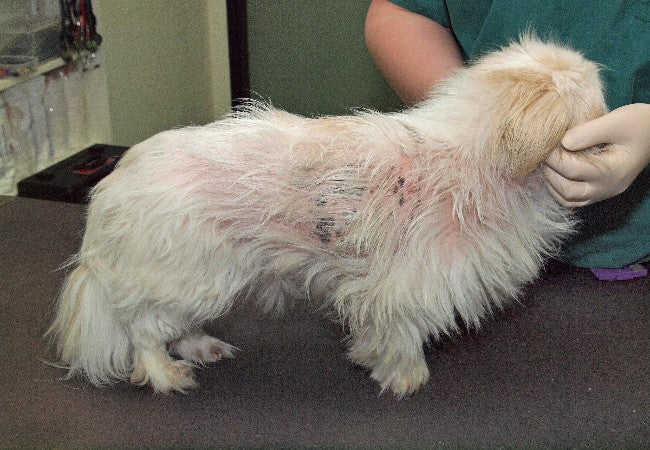Flea Bite Hypersensitivity in Dogs in 2025: Vet Reviewed Guide 🐶🦟

In this article
Flea Bite Hypersensitivity in Dogs in 2025: Vet Reviewed Guide 🐶🦟
By Dr. Duncan Houston BVSc
🔍 What Is Flea Bite Hypersensitivity?
Flea bite hypersensitivity—also called flea allergy dermatitis (FAD)—is a severe immune reaction to flea saliva, not just flea presence. Even a single flea bite can trigger intense itching and inflammation in sensitive dogs.
⚠️ Classic Symptoms
- Severe itching, scratching, licking—especially at rump, tail base, lower back, and rear legs.
- Papules (bumps), crusts, scabs, and hair loss, especially around the “flea triangle”.
- Secondary infections—bacterial or yeast—often develop in scratched areas.
🩺 Diagnosis
- Clinical signs—rampant itching in the flea triangle—are key clues.
- Even without visible fleas, a fine‑toothed comb, flea dirt checks, and environmental inspection help.
- Allergy testing—skin or IgE serum—can confirm sensitivity to flea saliva.
🚑 Treatment & Relief
- Strict flea control: year-round use of veterinarian-recommended topical or oral preventives plus environmental treatment (home, yard).
- Symptom relief: corticosteroids for short-term flare-ups; antihistamines or newer options like Apoquel/Cytopoint may also help.
- Skin care: medicated shampoos, topical treatments, and antibiotic/antifungal meds for secondary infections.
- Immunotherapy: not often successful for flea allergies, but may be considered in severe cases.
📆 Prevention is Key
- Even a single flea bite can prolong symptoms—100% year-round control is essential.
- Treat all pets in the home and address yard and indoor flea life stages.
- Pets with environmental allergies are even more prone to FAD—control should be extra diligent.
🔚 Final Thoughts
Flea bite hypersensitivity causes intense discomfort but can be managed successfully. Year-round flea prevention, targeted treatments for symptoms, and care for secondary infections help your dog stay comfortable and allergy-free 🔁🐶❤️.






